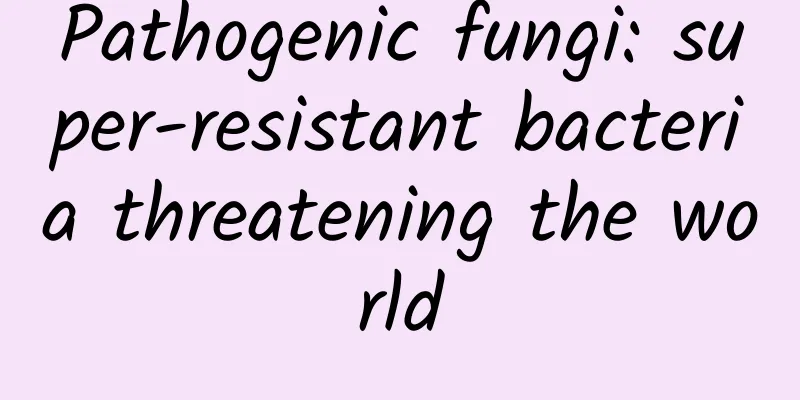Pathogenic fungi: super-resistant bacteria threatening the world

|
In the fight against the epidemic, our opponents are not only the new coronavirus, but also other pathogenic microorganisms, which can also add fuel to the flames, lead to co-infection, and increase the difficulty of the entire treatment process. Pathogenic fungi are an important member of them. In fact, this is not the first time that pathogenic fungi have appeared on the historical stage. In the long war between humans and viruses, they have posed a huge threat to human health. On April 6, 2019, the New York Times reported a fungus called "Candida auris" with the title "Deadly fungus, no cure". This fungus can kill about half of the infected people within 90 days, with a final mortality rate of 60%, and there is still no specific drug. The most puzzling thing is that this fungus appeared at the same time in all parts of the world as if they had "planned to do so", and it took only ten years for it to go from being unknown to sweeping the world... Candida auris can cause invasive candidiasis, such as candidal sepsis, pericarditis, urinary tract infection and pneumonia. Due to its multi-drug resistance, high mortality rate and difficulty in diagnosing infection, Candida auris is called a "super fungus". Currently, the US Centers for Disease Control and Prevention has listed Candida auris on the "urgent threat" list. Fungi in a lab dish (Image credit: Beobachter) Candida auris was first discovered in 2009 at the Tokyo Metropolitan Health and Longevity Medical Center in Japan. At that time, medical staff collected this previously unrecorded species of Candida from the ear canal of a 70-year-old Japanese woman. What really made Candida auris enter the public eye was the concentrated outbreak of infection at the Royal Brompton Hospital in the UK in 2016. At that time, the hospital had 72 cases of infection at once, and the ICU was closed for two weeks. Because the hospital underestimated the severity of the situation in the early stage, it did not disclose the situation in the hospital to the public at the first time. However, the situation disclosed later showed that as early as several months before the media intervened in the large-scale reporting, the hospital had issued relevant alarms internally and tried to sterilize the areas where the epidemic occurred. Since then, severe cases of Candida auris infection have broken out in many countries, with the most tragic being the large infection incident at the University Hospital of Valencia, Spain. This large hospital with 992 beds had a total of 372 cases of infection at the time, 85 of whom developed candida bacteremia, and 41% died within 30 days. Currently, what puzzles researchers most is the mysterious origin of this fungus and how it spread around the world. Given that the earliest cases were reported in Asia, scientists initially speculated that the strains that emerged in Asia triggered the outbreak in other parts of the world. However, after comparing the genetic information of strains collected from South Asia, Venezuela, South Africa and Japan, researchers were surprised to find that they belonged to four independent branches and had no inheritance relationship with each other. Further gene comparison results show that these four branches separated from the same ancestor thousands of years ago and existed as harmless colonies in environments around the world until 2009 when drug-resistant strains began to appear simultaneously. In other words, the Candida auris that is prevalent around the world appeared in different places almost at the same time, and several strains evolved independently in different places, and the possibility of parallel transmission between them is very small. What exactly caused them to emerge together as if they had "planned to do so" and cause trouble to the world? Unfortunately, the exact cause is still unknown. Taking the situation of drug-resistant bacteria as a reference, researchers initially naturally believed that the excessive use of antifungal drugs in clinical treatment was the main cause of fungal resistance. However, although there are not many types of drugs for treating fungal infections in clinical practice, the incidence of fatal fungal infections is actually very low, and the application scenarios and drug resistance problems of antifungal drugs are not as common as those of bacteria. So, if the blame is not on the misuse of antifungal drugs, who should bear it? The exact answer is still difficult to know, but pesticides used to kill plant fungi are likely the real reason behind it. Fungi may not only endanger the health of animals, but also the normal growth of plants. Therefore, when cultivating many crops, it is necessary to regularly kill pathogenic fungi in the soil. Unlike the numerous types of antibiotics, there are very few types of drugs to resist fungal infections, and most of them are azole compounds. Pesticides that kill plant fungi also contain structures similar to azole compounds, which means that fungi in the natural environment are likely to develop drug resistance mutations under the action of pesticides. Once they infect the human body, antifungal drugs with similar structures to pesticides will no longer work. In the future, in addition to further exploring the relationship between fungal resistance and antimicrobial drugs and pesticides, it is also urgent to develop new antifungal drugs with different antibacterial mechanisms. However, since fungi and human cells are both eukaryotic cells, there are many connections between the two, and drugs that kill fungal cells often harm normal human cells. Humans can currently only design antifungal drugs based on a limited number of differences between normal human cells and fungal cells. Unfortunately, most of these drugs can no longer effectively kill resistant strains. However, many scholars have suggested that humans can still seek inspiration from antifungal pesticides, because there are still a number of pesticides that can effectively kill fungi while maintaining low human toxicity, and a considerable number of these pesticides are still in a state where the bactericidal mechanism has not been fully understood. The idea of seeking inspiration for drug design from these antifungal pesticides is a reasonable choice. Fungi, bacteria and viruses, it's hard to tell them apart First of all, in terms of structure, viruses are the simplest, followed by bacteria, and fungi are more complex than bacteria. If viruses are human-powered flatbed carts, then bacteria are at least electric tricycles, and fungi are probably the lowest-end cars. Secondly, all three can cause disease in humans, but different approaches are needed to treat them. Most antibiotics are only effective against bacterial infections, viral diseases require antiviral drugs to treat, and fungal infections also have corresponding antifungal drugs. Finally, although there are many major enemies that endanger human health in all three, there are also allies that are indispensable to human life. Many fungi are indispensable in the brewing and fermentation industries, many bacteria play an important role in human digestion and the material cycle of the biosphere, and there are bacteriophages among viruses that can help humans kill bacteria or help humans synthesize proteins, etc. |
<<: Can cooking in an iron pan supplement iron?
>>: Uncovering the secret of the "silent killer" osteoporosis
Recommend
When does a girl ovulate?
Basically every girl needs to go through menstrua...
Nodular goiter is not actually a goiter
This is the 5299th article of Da Yi Xiao Hu When ...
How many days does it take to sweat during the confinement period
Generally speaking, women need to sit in confinem...
What causes kidney deficiency in girls?
Talking about kidney deficiency, many girls think...
How can young girls solve breast hyperplasia most effectively?
Many young girls experience breast pain before me...
What is the reason for the irritation of eyes when cutting onions? How to prevent the irritation of eyes when cutting onions
Onions are common ingredients in our kitchen. Alt...
Detailed explanation of the symptoms of Yin deficiency and damp-heat constitution, must read!
People with Yin deficiency and damp-heat constitu...
What causes acne on the breast
Many people get acne, usually on the face and bac...
There are four main causes of lung cancer in women: second-hand smoke, oil smoke, haze and stress
In recent years, the incidence and mortality of l...
How long can I have sex after having a miscarriage?
Caesarean section can cause great harm to women&#...
Lactation and menstruation
Will you have menstruation during breastfeeding? ...
What to do if there are lumps under the armpits during breastfeeding
For women, the older they get, the more they shou...
What happens if a woman holds her urine?
People hold urine for various reasons, but whethe...
If you have gallstones and experience right upper abdominal pain after eating greasy food, be careful of acute cholecystitis!
Author: Guo Shubin, Chief Physician, Beijing Chao...
Why do I urinate frequently after giving birth?
Many new mothers will experience unprecedented fe...









